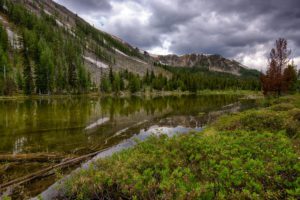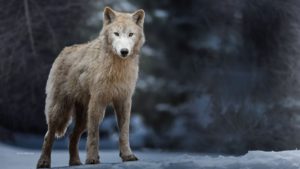FOR IMMEDIATE RELEASE July 16, 2021
CONTACTS:
Josh Osher, Western Watersheds Project, josh@westernwatersheds.org, 406-830-3099
Mary O’Brien, Project Eleven Hundred, maryobrien10@gmail.com, 541-556-8801
George Nickas, Wilderness Watch, gnickas@wildernesswatch.org, 406-542-2048
HAMILTON, Mont.– Conservation and wildlife advocacy groups sent a letter today to USDA Secretary Tom Vilsack, requesting emergency direction to the U.S. Forest Service to immediately reduce commercial domestic livestock on national forest lands that are experiencing extreme and exceptional drought. The letter provided evidence of current grazing authorizations for full stocking rates of cattle and sheep even though nearly all of the western United States is experiencing an unprecedented drought that is expected to continue for years to come.
“Drought conditions are now the norm rather than the exception in many parts of the West, yet they are always treated as a one-time emergency by the agency. Then, during these ‘crises,’ the short-term needs of livestock operators are prioritized over the long-term health on public lands,” said Josh Osher, Public Policy Director for Western Watersheds Project. “The Forest Service is well aware of the potential consequences from allowing heavy livestock grazing during extended drought, and yet many forests are simply putting their heads in the sand and allowing the destruction of native plants, fish and wildlife habitats.”
The letter points to the Forest Service’s own statements on drought and livestock grazing as an indication that immediate action at the national level is required, before irreparable harm occurs that will have lasting impacts on the ability of western lands to support native biodiversity, sequester carbon, and maintain resilience in the face of climate change.
According to Effects of Drought on Forests and Rangelands in the United States: Translating Science into Management, “Higher temperatures interact with drought to exacerbate moisture limitation and water stress… Drought in rangelands reduces forage and water available for livestock grazing and reduces overall vegetative land cover, which can lead to soil loss from wind and water erosion with long-term effects on rangeland productivity.” The U.S. Drought Monitor and Rangeland Production Monitoring Service states, “degradation can occur quickly if drought occurs and grazing persists” and that “for drought management strategies to be most effective, timely implementation is needed across large spatial scales.”
“The Forest Service provides its national forest managers with neither guidance nor support for appropriately altering livestock management in response to prolonged, repeated, or intense drought,” said Mary O’Brien, executive director of Project Eleven Hundred. “Instead, permits are issued each year as if the conditions on the forests have not been changed.”
“Despite the extreme conditions on the ground, the Forest Service is even trying to pack commercial livestock into Wilderness areas where they haven’t grazed for decades,” said George Nickas, executive director of Wilderness Watch. “Wildlife will be the big losers if the agency doesn’t rethink what it’s doing.”
The groups also called for the Forest Service to create comprehensive regulations for its grazing program to combat the climate crisis and conserve and protect biodiversity and natural resources, including mandatory provisions to address grazing during periods of extended drought.
***






